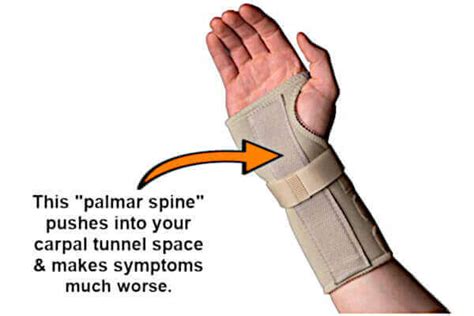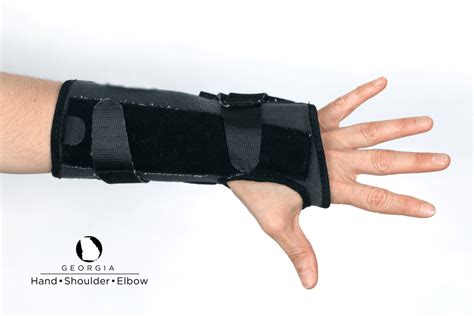Intro
Alleviate carpal tunnel syndrome with a wrist splint, providing relief from wrist pain, numbness, and tingling, while supporting tendon and nerve health for optimal hand function and comfort.
The wrist is a complex and delicate joint that plays a crucial role in our daily lives. However, it is also prone to various injuries and conditions, including carpal tunnel syndrome. This condition occurs when the median nerve, which runs from the forearm into the palm of the hand, becomes compressed or pinched. The symptoms of carpal tunnel syndrome can be debilitating, causing numbness, tingling, and pain in the hand and wrist. One of the most effective ways to alleviate these symptoms is by using a wrist splint for carpal tunnel relief.
Carpal tunnel syndrome is a common condition that affects millions of people worldwide. It can be caused by a variety of factors, including repetitive motion, poor posture, and certain medical conditions. The symptoms of carpal tunnel syndrome can be mild at first, but if left untreated, they can worsen over time, leading to chronic pain and disability. A wrist splint is a simple and non-invasive solution that can help to alleviate the symptoms of carpal tunnel syndrome and prevent further injury.
The importance of using a wrist splint for carpal tunnel relief cannot be overstated. By immobilizing the wrist and keeping it in a neutral position, a wrist splint can help to reduce pressure on the median nerve and alleviate the symptoms of carpal tunnel syndrome. A wrist splint can also help to prevent further injury by limiting the range of motion of the wrist and preventing repetitive strain. Whether you are suffering from mild or severe carpal tunnel syndrome, a wrist splint is an essential tool for managing your symptoms and preventing further injury.
What is a Wrist Splint?

Types of Wrist Splints
There are several different types of wrist splints available, each with its own unique features and benefits. Day splints are designed to be worn during the day and are typically made of a lightweight material. They are ideal for people who need to perform daily activities, such as typing or cooking, without exacerbating their carpal tunnel syndrome. Night splints, on the other hand, are designed to be worn at night and are typically made of a more rigid material. They are ideal for people who tend to bend their wrists while sleeping, which can exacerbate carpal tunnel syndrome.How Does a Wrist Splint Work?

Benefits of Using a Wrist Splint
There are many benefits to using a wrist splint for carpal tunnel relief. Some of the most significant benefits include: * Reduced pain and discomfort * Improved range of motion * Reduced inflammation * Prevention of further injury * Improved sleep quality * Increased productivityHow to Choose the Right Wrist Splint

Wrist Splint Features to Consider
When choosing a wrist splint, there are several features to consider. Some of the most important features include: * Adjustable straps: Look for a wrist splint with adjustable straps that can be customized to fit your wrist comfortably. * Rigid support: A rigid support system can help to immobilize the wrist and provide additional stability. * Breathable material: A breathable material can help to keep the skin cool and dry, reducing the risk of irritation and discomfort. * Lightweight design: A lightweight design can make the wrist splint more comfortable to wear and reduce fatigue.Using a Wrist Splint for Carpal Tunnel Relief

Common Mistakes to Avoid
When using a wrist splint for carpal tunnel relief, there are several common mistakes to avoid. Some of the most significant mistakes include: * Wearing the wrist splint too tightly: Wearing the wrist splint too tightly can restrict blood flow and cause discomfort. * Not wearing the wrist splint consistently: Not wearing the wrist splint consistently can reduce its effectiveness and prolong recovery time. * Ignoring underlying conditions: Ignoring underlying conditions, such as poor posture or repetitive strain, can reduce the effectiveness of the wrist splint and prolong recovery time.Caring for Your Wrist Splint

Wrist Splint Maintenance
Regular maintenance is essential to ensure your wrist splint remains effective and comfortable to wear. Some of the most important maintenance tasks include: * Checking the straps: Check the straps regularly to ensure they are secure and provide the right amount of support. * Inspecting the material: Inspect the material regularly to ensure it is not damaged or worn out. * Replacing the wrist splint: Replace the wrist splint as directed by the manufacturer or when it becomes worn out or damaged.What is carpal tunnel syndrome?
+Carpal tunnel syndrome is a condition that occurs when the median nerve, which runs from the forearm into the palm of the hand, becomes compressed or pinched.
How does a wrist splint work?
+A wrist splint works by immobilizing the wrist and keeping it in a neutral position, reducing pressure on the median nerve and alleviating the symptoms of carpal tunnel syndrome.
What are the benefits of using a wrist splint?
+The benefits of using a wrist splint include reduced pain and discomfort, improved range of motion, reduced inflammation, and prevention of further injury.
In conclusion, a wrist splint is a simple and effective solution for managing the symptoms of carpal tunnel syndrome. By immobilizing the wrist and keeping it in a neutral position, a wrist splint can help to reduce pressure on the median nerve and alleviate pain and discomfort. Whether you are suffering from mild or severe carpal tunnel syndrome, a wrist splint is an essential tool for managing your symptoms and preventing further injury. We encourage you to share your experiences with wrist splints and carpal tunnel syndrome in the comments below. If you found this article helpful, please consider sharing it with others who may be suffering from carpal tunnel syndrome.
